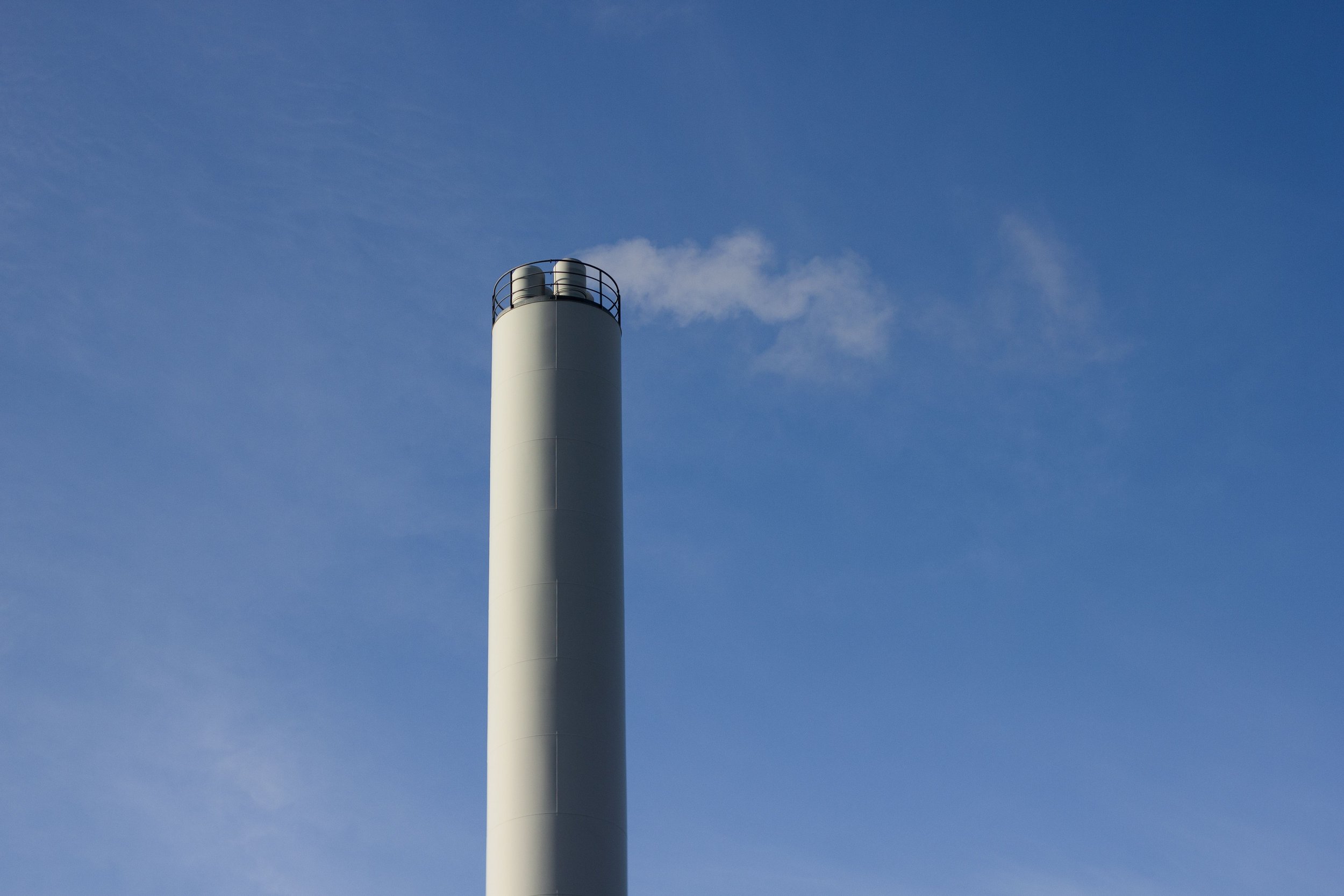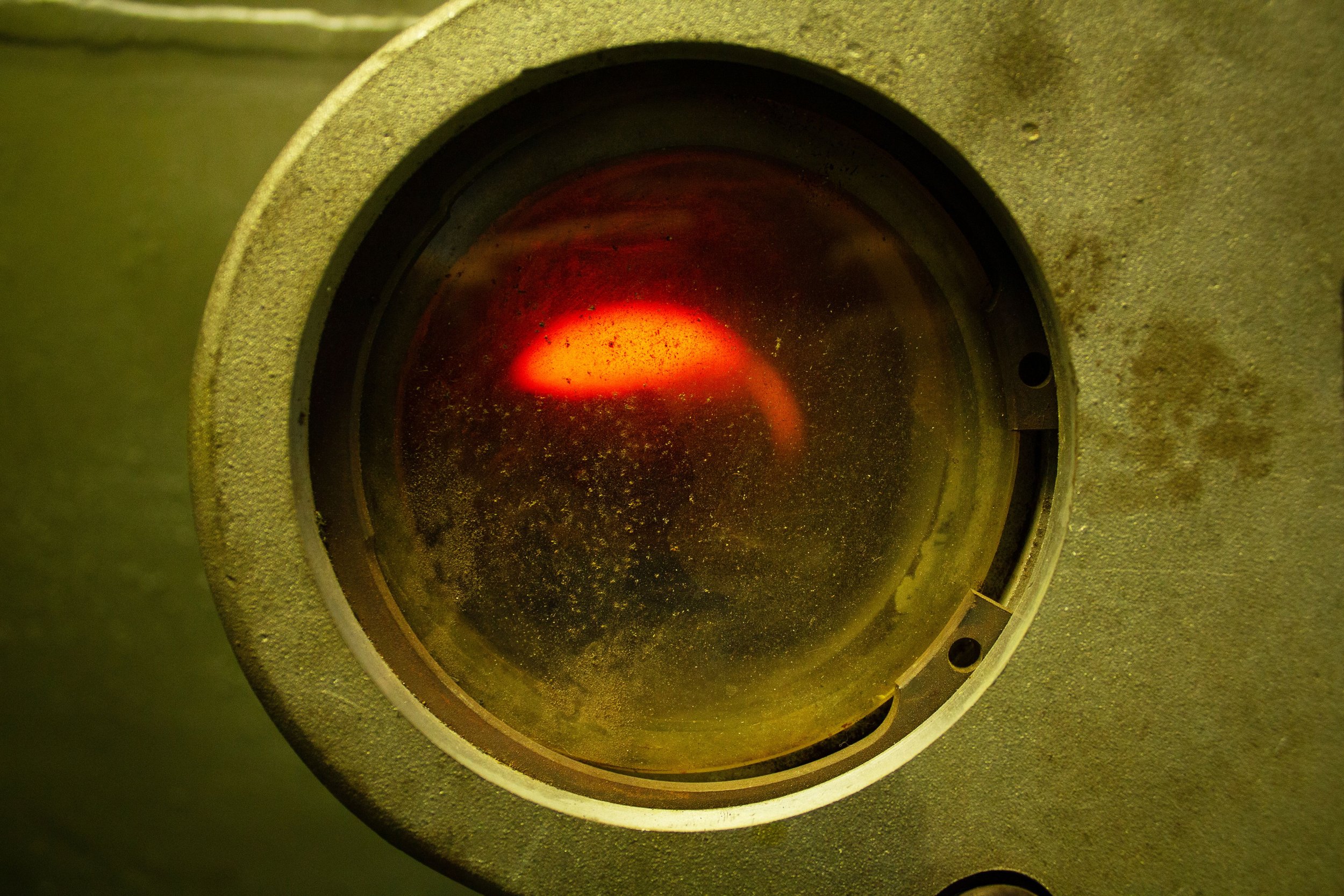Where Does the Heat at Campus Come From?

Where Does the Heat at Campus Come From?
Like an obelisk planted in the ground, a steaming pipe marks a facility responsible for no cold students at campus. How exactly is this heat generated? Tuntreet has paid the remote heating facility by the Veterinary building and Nordskogen a visit.
Journalist: Simen Walbækken Tangen
Translator: Sofie Palmstrøm
Photographer: Tord Kristian F. Andersen
New Ways to Heat NMBU
Tuntreet was warmly welcomed by Per Weidenhajin and Ole Jonny Ellingsen inside the facility. They are responsible for selling the heat power and the operation of the facility respectively. They explain that the remote heating facility heats up water and can be seen as a giant water boiler. The water exits though a network of pipes, for the heat to be transferred to the connected buildings. In 2012, Statkraft bought the university’s old network of pipes, at the time called UMB, and built the new remote heating facility in 2013. There has previously been both a coal power plant at the clock-building, an oil furnace, and then a pellet furnace at Meieribygget. The new remote heating facility is a more sustainable solution compared to the previous ones.
Burning Chipwood
The main reason that the remote heating facility can be called sustainable is that it is supplied by leftover material from the timber industry. Among others, bark, trees damaged by rot and offcuts from sawmills are grinded into chipwood and sent to be burned in the remote heating facility. About 24 trucks, holding about 30 tonnes each, come here every week during the winter months. The chipwood is mainly derived from the eastern part of the country.
It smells of forest and moist bark when a truck unloads its heavy chipwood cargo. One of the employees at the facility explains how the truck pushes the chipwood out using a grates moving back and forth. He says it looks like an elephant pooping.
The chipwood is sorted by type and moisture, and is distributed to the furnace using a crane. Ole Jonny explains that the mix of dry and moist chipwood must be about right to get the best burn. The chipwood burns badly is it is too moist, but it burns too fast if it is too dry. From the chipwood storage the chipwood is fed with screws and chain conveyors into the oven where it is burnt.
The Window to Hell
This is how you experience it if you look straight into the furnace. Ole Jonny opens a small window in order for us to take a look. The flames are everywhere and the heat is radiating from the oven, which has a temperature of over 1000°C. Ole Jonny explains that the temperature decides how fast the chipwood is fed into the furnace. Then the chipwood is led onto grates, which slowly but surely leads it towards the bottom, where the chipwood eventually turns into ash. “When the chipwood enters it is a bit moist, but it quickly dries up from the heat of the furnace”, Ole Jonny says.
He further explains that the ash is taken out and led to a container that is later transported away. Out of all the chipwood that is burnt, about 2-3% ash remains. The containers are transported to Statkraft’s facility in Moss, which takes care of the ash. Usually, ash can be of use, for example as fertilizer, but by burning forest from the eastern part of Norway, the remaining ash often contains heavy metals. This might come from industrial waste or larger amounts of car traffic near the forest. As per now the ash is simply disposed, but the hope for the future is that we can recycle the heavy metals and make new use of them.
Heat Conduction and Smoke Condensation
Inside the heating facility there are tons of pipes, and it isn’t easy to understand the connection between it all. Ole Jonny explains that the smoke leaving the furnaces goes through a heat exchanger that heats up the water in the pipes to over 100°C. The reason that the water can still be in a liquid state and doesn’t evaporate is that the water has a pressure of 7,5 bar as it is pumped out. The smoke then goes through a smoke filter that works almost like a vacuum filter, where all the fine ash is taken out. The last thing the smoke does before exiting the facility is passing a smoke condensation system in order for the temperature of the smoke to be about 40-50°C. At the facility they run precise measurements, so they rarely let out anything other than water vapour.
A Rural Urban Facility
Up in the control room Ole Jonny explains how the heat is distributed further to NMBU, SiÅs and several other buildings in Ås municipality. The pipes are laid in pairs so one pipe transports and conducts heat to the consumer, while the other pipe transports the water back to the facility. On each connected building there is a heat exchanger, where the main pipe lays right next to the pipe system in the building and heats up the water in the local pipe system. Ole Jonny explains that the heat loss in the big loop around all of Ås is not very large. On a cold winter day, the temperature going out is about 105°C and coming back from the consumers it is usually about 45°C.
Remote heating facilities are usually located in more urban areas. In larger cities there is a larger need, and one might also connect several heating facilities or use excess heat from factories. A lot of the reason why the facility could be established in Ås was because NMBU is a big client, and later several other municipal buildings were also connected. Among others, the remote heat is conducted to the Livestock Production Research Centre. Per explains proudly that it is rare that chickens and other animals lay on concrete heated from a remote heating facility.
Built to Last
After Statkraft bought NMBU’s old remote heating facility, they have added quite a bit to it. Now the heating pipes go all the way across to the other side of the railroad. Several of the new building projects in Ås are also to be connected to the remote heat, the pipes are dimensioned to transport a lot more than they do today. “The biggest cost of remote heating is to connect, the rest is automated with thermostats that regulate the heat exchangers”, Ole Jonny explains.
In the middle of the pipes there is a steel pipe where the water in pumped though. Around the pipes there is insulation of about 40 cm in diameter. Outside the insulation there is a plastic cover to avoid moisture damage on the insulation. In addition, there are control wires that can monitor the moisture in the insulation and easily locate potential leaks. After the pipes are put in the ground, they can last up to 100 years.
Lots of Backups
The facility has a lot of backup systems that can maintain the operations in case of an emergency. If the chipwood furnace were to be broken, there is also an oil furnace that is a little less environmentally friendly. The same goes for the electricity. A couple of years back Ole Jonny experienced a power outage after some faulty digging. They then fired up a diesel generator which kept the process running. This makes sure that everyone who is connected to the remote heating gets their heating, despite serious power outages.
Distributions Between NMBU, SiÅs and Ås Municipality
In total, the remote heating facility produces 40 GWh of energy each year. This corresponds to an average power use of 1000 single houses of 300 m2. NMBU is the facility’s largest customer and uses around 27 GWh. Following NMBU is Ås Municipality which uses 2,8 GWh and SiÅs with a consumption of 2,5 GWh. The remaining 7,7 GWh is distributed to Nofima, NIBIO, Ås high school and some apartments in the city centre, among others.
Map of the heat distribution network on Campus
The Veterinary Building, which is the closest neighbour to the heating facility (not counting the discontinued fur farm), is one of the newest buildings that have been connected. Out of the total energy from the heating facility, the Veterinary Building uses 30%, about the power need of 1800 apartments of 80 m2. This is a pretty big piece of the cake, but Ole Jonny expects the consumption to go down a little as the use is more adapted.
SiÅs use the remote heat to warm up buildings and hot water in Skogveien, Utveien, Skoggården and Eika. Several of the laundry rooms also gets hot water from remote heat.
It appears that there are incredibly many people in Ås who share the heat. Imagine if we had done as in the olden days, where every building was heated by its own wood burner. The air would be filled with smoke and many backs would be aching from carrying wood. Maybe the semester fee would be paid by carrying a load of wood to the school every now and then. The heating of houses has had a tremendous development from smoky hearths in the middle of the long houses during the Viking age, via ovens and cast-irons stoves, to today. One thing they all have in common. They all burn with (tun)tre.












